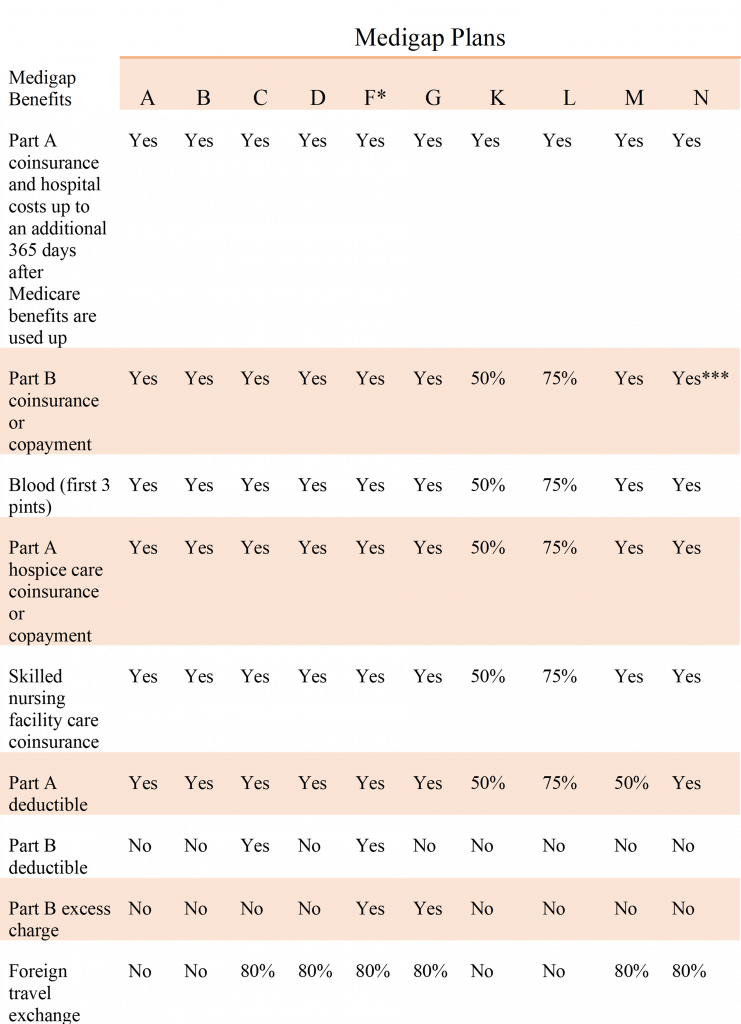Choosing Your Medigap Plan
Choosing Your Medigap Plan
By: Stacey Nickens
Many seniors rely on Medicare to cover their health expenses. However, Medicare doesn’t cover all healthcare expenses. Part B will provide coverage for up to 80% of your medical expenses. This coverage only kicks in once you hit your deductible, and Part B does not have an out-of-pocket maximum. Additionally, Part A will only cover the first 60 days that you spend in a hospital. Part A also includes a deductible.
In order to cover these gaps, some seniors invest in a Medicare Advantage plan or purchase a supplemental policy. Medicare supplemental policies are commonly called Medigap plans. Medigap plans are sold by private insurance companies and are standardized. This means that all Medigap A plans provide the same coverage, even if different insurers charge different rates. (Massachusetts, Minnesota, and Wisconsin are the exception to this rule. These states standardize their Medigap plans in a different manner. You can visit Medicare.gov to learn more about the standardization in those three states.)
There are 10 different types of Medigap plans, categorized by letters A through D, F, G, and K through N. Picking out the right plan for yourself involves deciding what kind of coverage you may need.
Unfortunately, two of the most popular Medigap plans will no longer be offered to new beneficiaries as of January 1, 2020. Plan F was the most popular Medigap offering because it covered Part A hospital deductibles and co-payments, the Part B deducible, and some emergency care in foreign countries. However, Medigap plans can no longer cover Part B deductibles, thus taking Plan F off the table for new beneficiaries. Those who were enrolled in Plan F prior to January 1, 2020, will be able to keep their coverage.
Plan C was similarly impacted by this change. Plan C offered the same coverage as Plan F, but Plan C does not cover the Part B excess charge. An excess charge occurs when a provider submits a claim that exceeds Medicare’s coverage limits. The insured would then be responsible for the excess charge.
Those who were interested in Plan F can instead consider Plan G. Plan G offers the same coverage without paying for the Part B deductible.
Those who do not anticipate having regular doctors’ visits might enroll in Plan N. Plan N offers lowers premiums in exchange for more cost sharing.
You can review the below chart to better understand the coverage offered by each plan. You can also use Medicare’s search tool to view the availability and pricing of Medigap plans in your area. As you consider your different options, please do not hesitate to reach out to Elm3 with any questions. We are happy to assist you in planning for your retirement needs.
Chart Guide:
- Yes = the plan covers 100% of this benefit
- No= the plan covers 0% of this benefit
- % = the plan covers a certain percentage of this benefit
- N/A = not applicable

*Some states offer a high-deductible version of Plan F and G. This high-deductible plan requires you to pay Medicare coinsurance, copayments, and deductibles up until you hit the plan’s deductible. The plan’s deducible is $2,370 in 2021.
**With Plans K and L, you must first reach your out-of-pocket limit and your Part B deductible. Once you have done so, Pans K and L will cover 100% of services for the remainder of the year.
***Plan N will pay for 100% of Part B coinsurance, with the exception of a $20 copayment for certain office visits and a $50 copayment for certain emergency room visits.







